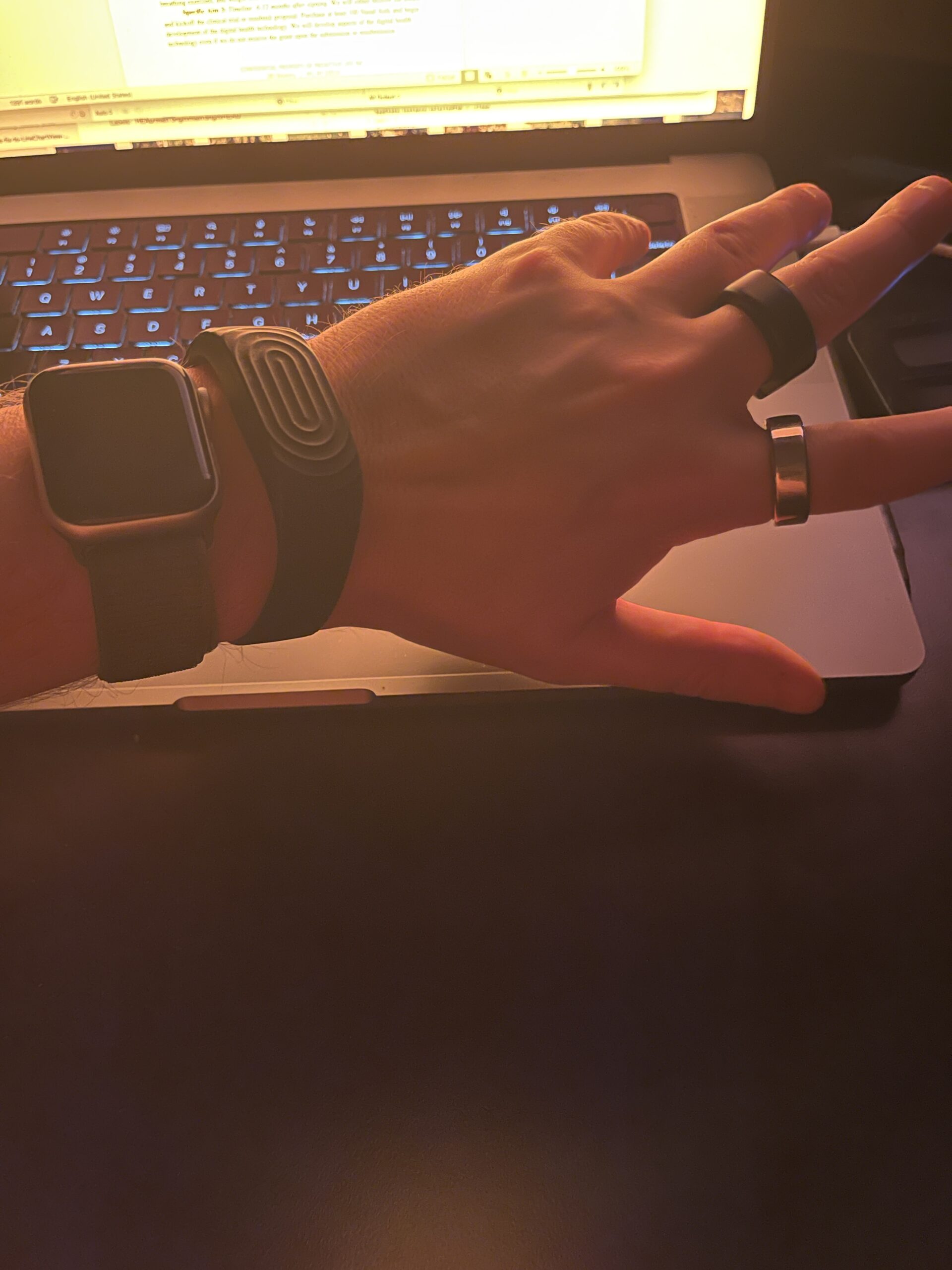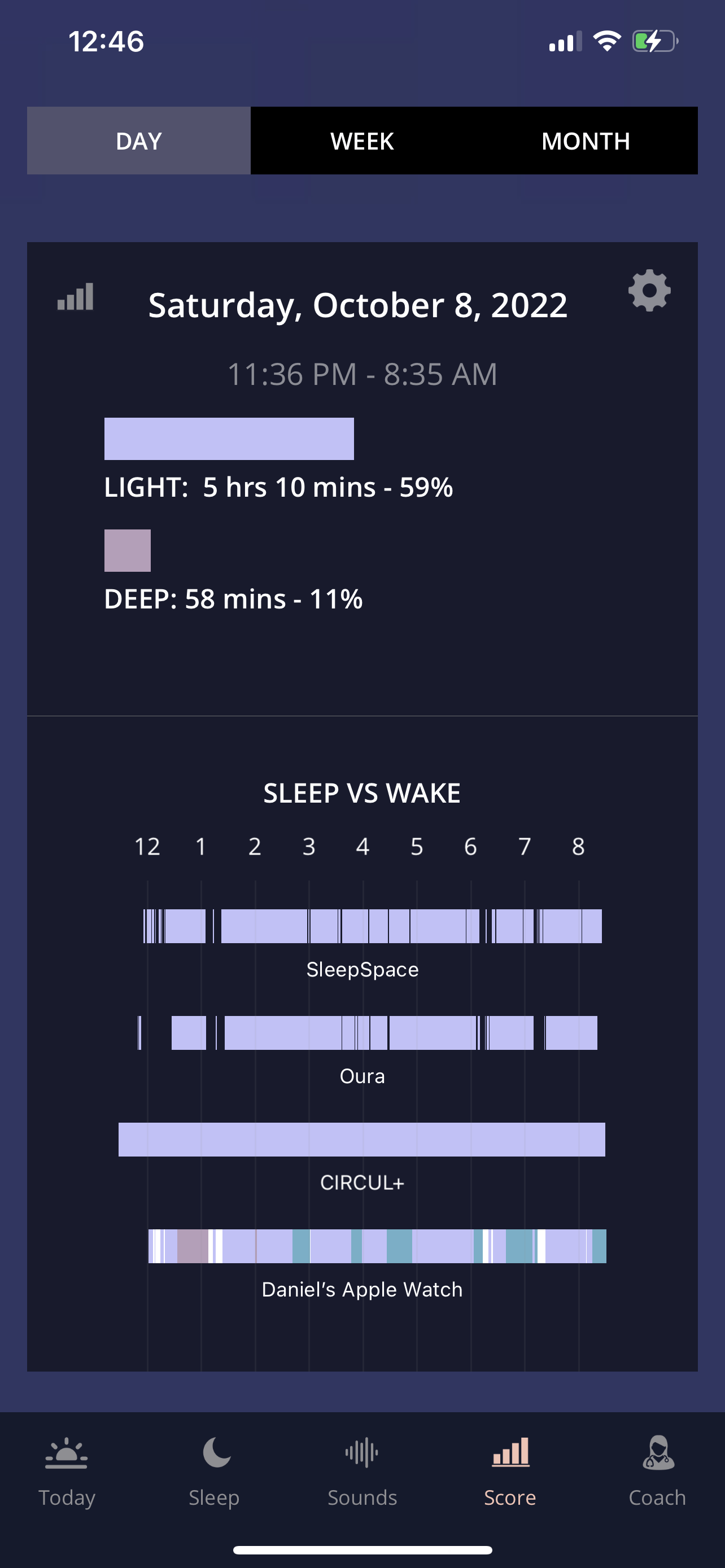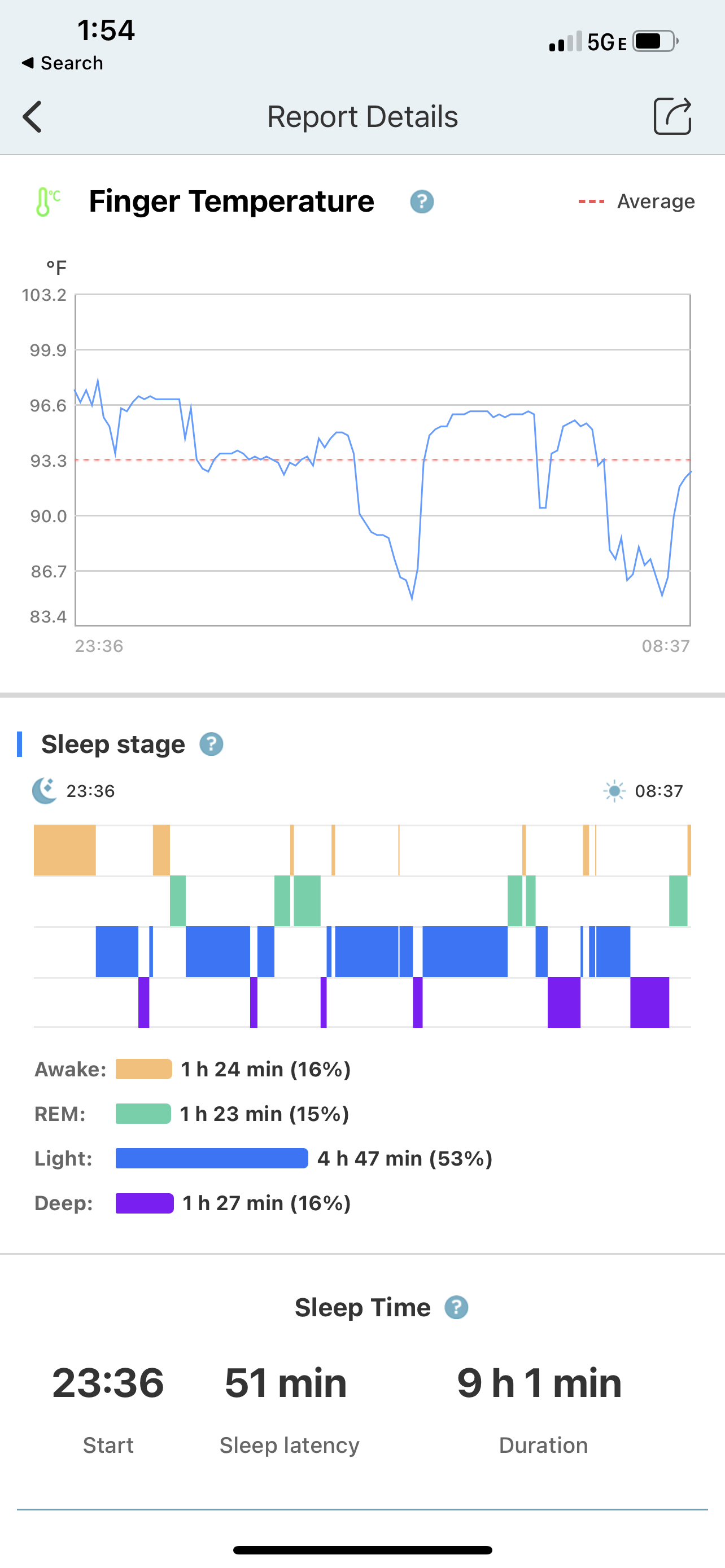Comparing wearables: Oura, Apple Watch, SleepSpace, and Circul+

October 8, 2022. Wearables are getting more and more reliable at accurately measuring sleep. Our lab's 2020 publication, shows just this, and we are publishing a new paper in 2023 that shows even better results for measuring sleep stages.
However, there are still important differences between wearable output, even among top devices. In this experiment that Dr. Dan Gartenberg conducted on October 8, 2022 he measured the output of 4 wearable devices and 5 algorithms using the SleepSpace platform.
Devices that were measured included SleepSpace running our Apple Watch algorithm, Oura Ring, Circul+, Biostrap, and Apple's Apple Watch algorithm. Dr. Gartenberg measured all devices on the same hand because of findings in the literature that there are differences based on extremity of measurement.
A few observations from the data. Color Key: green indicates REM sleep, White indicates an awakening, Light Purple indicates light sleep and Dark Purple indicates deep sleep.

-
Comparing SleepSpace, Oura Ring, and Apple Watch
-
-
- There is a nice correspondence between awake and asleep for SleepSpace, Oura, and Apple Watch. What to look for in a correspondence is a fingerprint-like match between sleep and wake. Yet Apple Watch is a bit conservative in not measuring micro-awakenings. It is natural to awaken briefly at night and many devices do not capture this. Apple does not consider these brief awakenings as sleep, so this is important when interpreting the data. Apple Watch almost always gives a higher sleep efficiency than reality.
-
- SleepSpace is still the most accurate in measuring micro-awakenings.
-
- Wearables like Oura and Apple Watch that do not require pressing a button to indicate in / bed and out of bed can have a hard time measuring time in bed, and this can be inaccurate detectors of sleep efficiency. Dr. Gartenberg's actual bedtime was 11:36, but only SleepSpace and Circul+ picked up on that because they require pressing a button at sleep time. While there are some disadvantages of this, it provides a more accurate interpretation of the night of sleep.
-
- Dr. Gartenberg believes all three sleep stage algorithms are under-predicting deep sleep. SleepSpace says he only got 58 minutes and Apple Watch said 36 minutes, and Oura said 35 minutes. Healthy deep sleep for my age (36 years old) is around 1.5 hours. While again, SleepSpace seems more accurate, based on perviously known typical deep sleep from PSG studies conducted in a laboratory where Dr. Gartenberg saw the wearables under-predict this.
-
- Note that the Biostrap data wasn't connected to Apple Health, but Dr. Gartenberg will report back on this in a later experiment. Circul+ does not have sleep stages published to apple health, but also has other relevant variables like accurate Pulse oxygenation (very important!).
Takeaway: Wearables are improving more and more, but we still need to contextualize the data and compare between different systems in a reliable way to get the most out of it. SleepSpace helps users by enabling them to get different recovery scores based on their sleep need. For example, if someone needs 8 hours of sleep instead of 7 hours of sleep, it will be harder for them to get full recovery when they set this in the SleepSpace platform.
-
Circul+ Review
-
-
Confirming the hypothesis that Apple Watch and Oura are under-predicting deep sleep, the circul+ device predicts a healthy amount of 1.5 hours of deep sleep for the same night (see left image).
-
Circul+ Is the most accurate smart ring with its patented adjustable sizing for optimum comfort and fit. Get grandular data about your pulse oxygenation (SpO2), sleep stages, and heart rate variability. Learn about your optimum athletic performance and more and click below for a limited time $30 off coupon with code sleepspace10.
